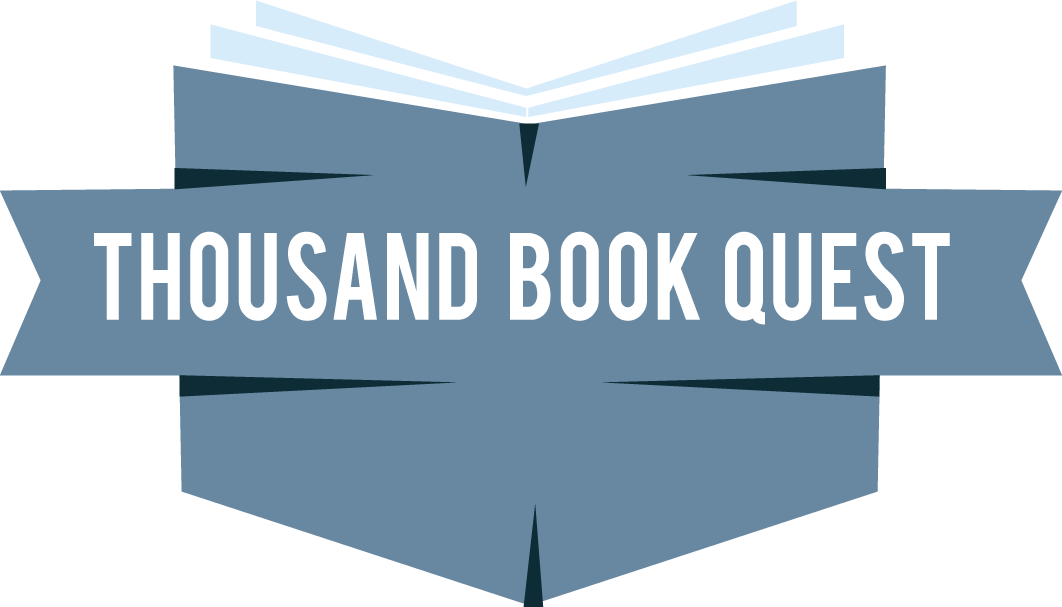http://www.thousandbookquest.com/wp-content/uploads/2017/04/thousand.book_.quest3_.png
0
0
Anne-Marie Reader
http://www.thousandbookquest.com/wp-content/uploads/2017/04/thousand.book_.quest3_.png
Anne-Marie Reader2020-09-03 22:13:232020-09-03 22:13:25449. In Six Days: An Eco-Terrorism Fable
https://i0.wp.com/www.thousandbookquest.com/wp-content/uploads/2020/09/In-the-Unlikely.jpg?fit=190%2C282&ssl=1
282
190
Anne-Marie Reader
http://www.thousandbookquest.com/wp-content/uploads/2017/04/thousand.book_.quest3_.png
Anne-Marie Reader2020-09-03 22:09:452020-09-03 22:09:48448. In the Unlikely Event
https://i0.wp.com/www.thousandbookquest.com/wp-content/uploads/2020/09/A-Discovery-of-Witches.jpg?fit=182%2C276&ssl=1
276
182
Anne-Marie Reader
http://www.thousandbookquest.com/wp-content/uploads/2017/04/thousand.book_.quest3_.png
Anne-Marie Reader2020-09-03 22:06:172020-09-03 22:06:20447. A Discovery of Witches
https://i0.wp.com/www.thousandbookquest.com/wp-content/uploads/2020/09/An-Object.jpg?fit=155%2C227&ssl=1
227
155
Anne-Marie Reader
http://www.thousandbookquest.com/wp-content/uploads/2017/04/thousand.book_.quest3_.png
Anne-Marie Reader2020-09-03 22:03:312020-09-03 22:03:34446. An Object of Beauty
https://i0.wp.com/www.thousandbookquest.com/wp-content/uploads/2020/09/Recursion.jpg?fit=168%2C253&ssl=1
253
168
Anne-Marie Reader
http://www.thousandbookquest.com/wp-content/uploads/2017/04/thousand.book_.quest3_.png
Anne-Marie Reader2020-09-03 22:00:482020-09-03 22:00:50445. Recursion
https://i0.wp.com/www.thousandbookquest.com/wp-content/uploads/2020/09/Never-Split.jpg?fit=153%2C230&ssl=1
230
153
Anne-Marie Reader
http://www.thousandbookquest.com/wp-content/uploads/2017/04/thousand.book_.quest3_.png
Anne-Marie Reader2020-09-03 21:57:532020-09-03 21:57:56444. Never Split the Difference: Negotiating As If Your Life Depended On It
https://i0.wp.com/www.thousandbookquest.com/wp-content/uploads/2020/09/Plainsong.jpg?fit=152%2C233&ssl=1
233
152
Anne-Marie Reader
http://www.thousandbookquest.com/wp-content/uploads/2017/04/thousand.book_.quest3_.png
Anne-Marie Reader2020-09-03 21:55:012020-09-03 21:55:04443. Plainsong
https://i0.wp.com/www.thousandbookquest.com/wp-content/uploads/2020/09/Factfulness.jpg?fit=152%2C233&ssl=1
233
152
Anne-Marie Reader
http://www.thousandbookquest.com/wp-content/uploads/2017/04/thousand.book_.quest3_.png
Anne-Marie Reader2020-09-03 21:49:292020-09-03 21:51:32442. Factfulness: Ten Reasons We're Wrong About the World – and Why Things Are Better
https://i0.wp.com/www.thousandbookquest.com/wp-content/uploads/2020/09/Childhoods-End.jpg?fit=145%2C238&ssl=1
238
145
Anne-Marie Reader
http://www.thousandbookquest.com/wp-content/uploads/2017/04/thousand.book_.quest3_.png
Anne-Marie Reader2020-09-03 21:44:372020-09-03 21:44:40441. Childhood’s End
https://i0.wp.com/www.thousandbookquest.com/wp-content/uploads/2020/09/Range.jpg?fit=145%2C216&ssl=1
216
145
Anne-Marie Reader
http://www.thousandbookquest.com/wp-content/uploads/2017/04/thousand.book_.quest3_.png
Anne-Marie Reader2020-09-03 21:41:342020-09-03 21:41:36440. Range: Why Generalists Triumph in a Specialized World
Scroll to top
